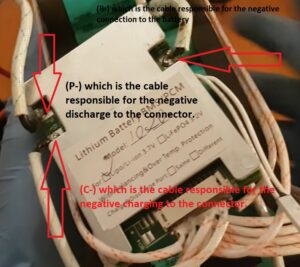The electric bicycle battery is one of the most expensive parts of an electric bicycle, and when the battery is damaged or unable to charge, it is very confusing.
Although the battery can be repaired, there are some cases in which repair can also be expensive.
For example, when the internal cells need to be changed because they have become completely damaged, this situation often occurs when the battery is left completely empty for more than a week.
In this post, we will explain how to do a battery revival, but before we start, you should see this warning.
Warning: Reviving the electric bike battery has certain rules and conditions and must be done by specialists, and everything we will explain in this post is based on our personal experiences, and if you decide to do it yourself, you will do it on your own risk
What is the reason for the inability to charge a totally flat battery?
Before we start how to revive an electric bike battery, maybe we should understand why we can’t fully charge an empty battery so that we can know how to revive it again.
The reason why you are unable to charge an empty electric bike battery is the presence of a BMS, (battery Management system) which is programmed at a minimum voltage that must be in the battery (about 2 to 2.5 volts) in order to function.
When the first set of cells reaches the minimum, the BMS shuts down the battery completely.
When recharging, there must be a minimum total voltage in the battery so that the BMS allows electrical current to flow into the battery cells.
If your electric bike battery is below the minimum voltage, the BMS will not allow the electric current to flow into the battery cells.
When you should Revive your ebike battery?
In this section, we will find out what are the appropriate conditions in which you can revive the battery of your electric bike.
And reviving the battery depends mainly on the amount of voltage inside the cells, if it is much less than the minimum limit, it will be
dangerous to try to revive the battery because it could cause a fire or explosion in the cells.
Now let’s find out what is the minimum and maximum voltage for your electric bike battery.
The upper limit will be written on the battery, such as 54.6 volts, and it is calculated as follows:
Number of cells * Highest volts per cell (usually 4.2 on all electric bike batteries)
For example, in the previous example.
The battery is 13 cells * 4.2 = 54.6
The minimum will be from 2 volts to 2.5 volts, depending on the quality of the cell.
Based on the previous example, the minimum value of the battery will be
13 * 2.5 = 32.5
And after we know how to determine the minimum and maximum battery voltage, if your battery is less than the minimum voltage by 8 volts, you can revive the battery again
But if the voltage of the entire battery is much less than the minimum, such as 10 volts or less, we do not recommend reviving it at all.
How Do You Revive A Dead EBike Battery?
In this part, we will explain how to revive your electric bike battery, and we will need the following tools:
1- Power supply (if it is not available, a small charger can be used for lithium batteries)
2- screwdriver
3 – Voltmeter
Steps for reviving the electric bike battery:
1- Remove the battery cover
The first step is to remove the outer cover of the battery using a screwdriver.
2-Measure the voltage of the battery from the BMS side.
Using a voltmeter, measure the voltage coming out of the BMS by placing the positive probe on the positive part of the BMS and placing the negative probe on the negative part of the BMS

3-Measure the voltage of all battery cells.
In this step, we will measure the voltage of all battery cells using a voltmeter in order to determine which cells have the lowest voltage
To measure the voltage, place the positive probe on the positive side of the battery cell and the negative probe on the negative side of the battery
Identify the cells with the lowest voltage by marking them.
4- Disconnect the BMS.
After we have identified the cells that have the lowest voltage in the battery, we will disconnect the BMS so that it does not control the entry of electric current into the cells in order to start reviving the battery
In order to do so, you must separate the positive and negative sides of the BMS, according to the design of the BMS in your battery, whether by loosening the solder or removing the cable connected to it.
5-ٍStart Charging Slowly.
In this step, we will charge the battery very slowly (using a 1 Ampere charger, for example), and there are two ways to charge.
The first method is to charge each battery cell separately using a slow charger (but this method will need to reconnect the cells again, which may require specialized devices)
The second method is to connect the power supply directly to the positive and negative poles of the entire battery, with an adjustment to the lowest possible charge rate
When charging starts, wait until the charging level reaches 50% only and disconnect the power supply.
6-Reconnect the BMS
In this step, we will reconnect the BMS and measure the voltage again to make sure that the voltage has become more than the minimum.
7-But the battery Cover is Back.
The last step is to put the battery cover back on and start charging using the original battery charger.
Related Posts.
Ebike Battery Health Guide- All You Need To Know
How Do You Discharge An Ebike Battery For Storage?
How long Do Ebikes Batteries last? Charge & lifespan
Conclusion.
In order to revive the battery of your electric bike, you should charge the battery directly without relying on BMS, taking into account all safety and security measures and taking into account the conditions for reviving the battery
